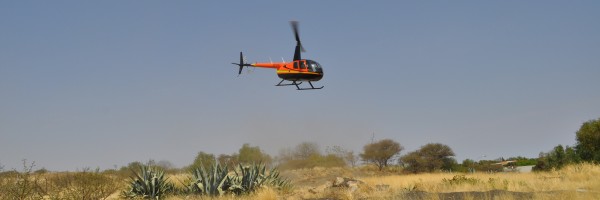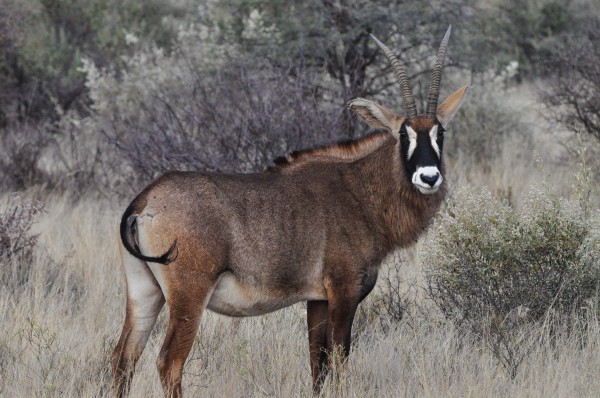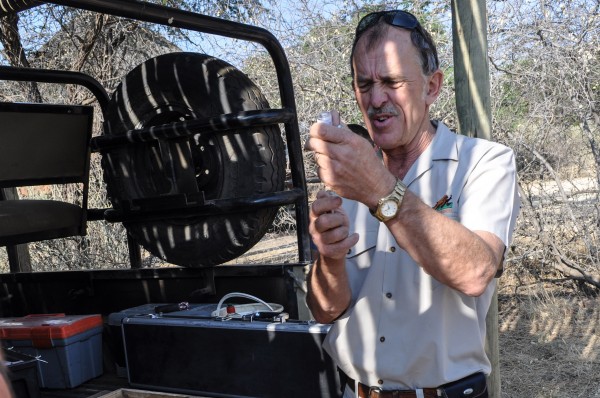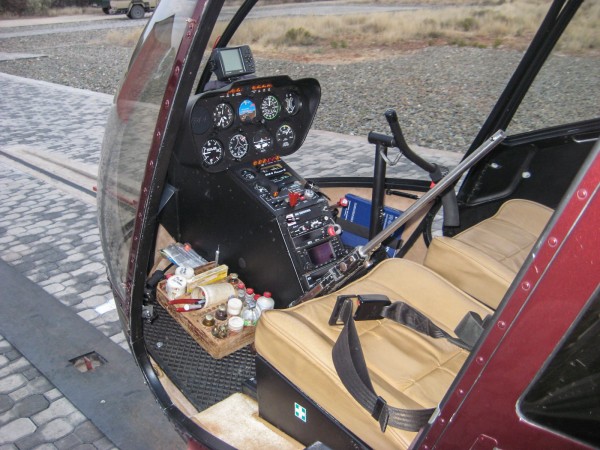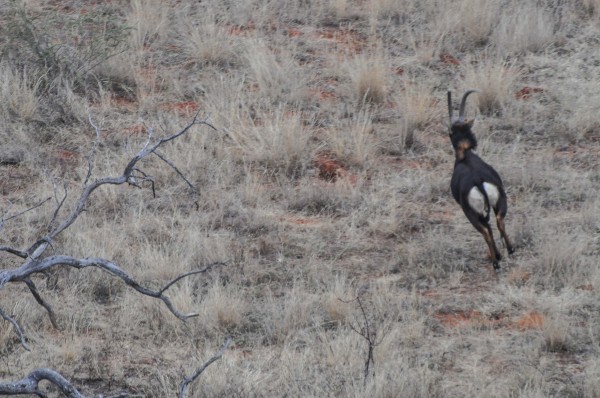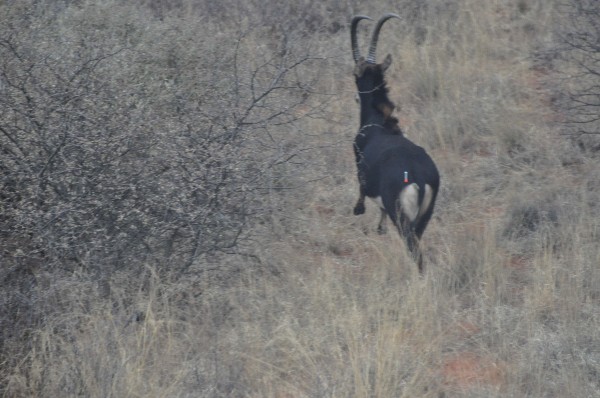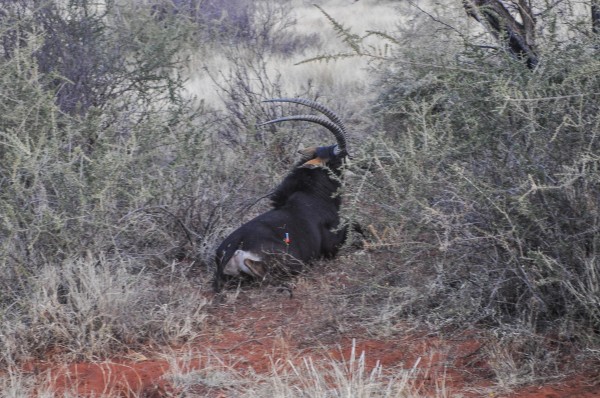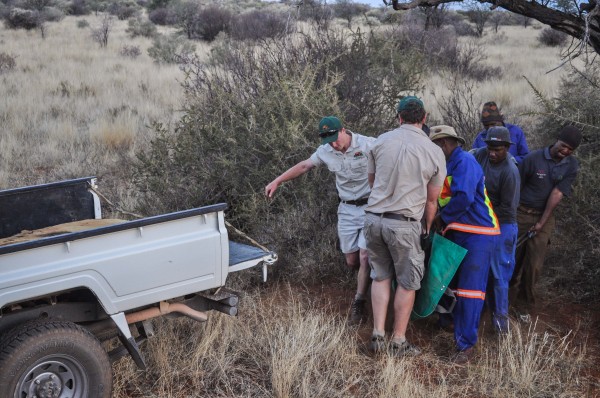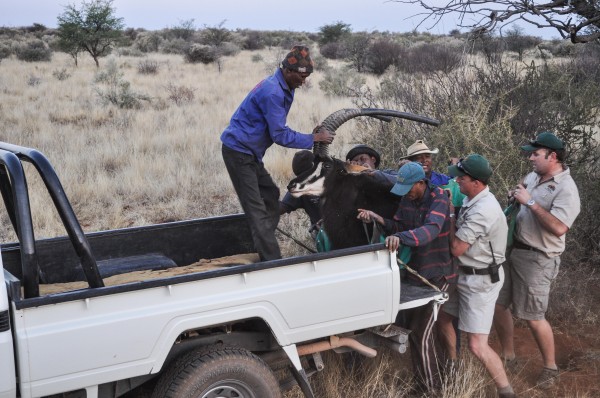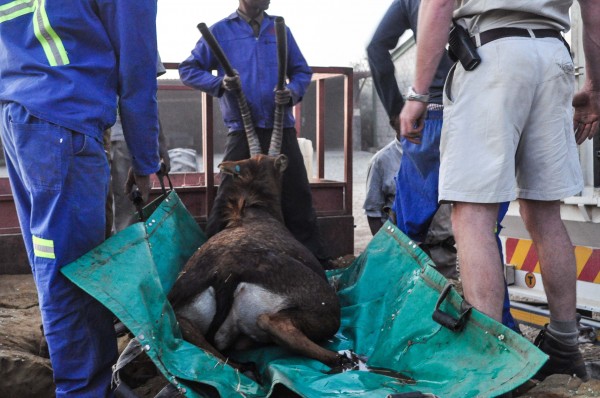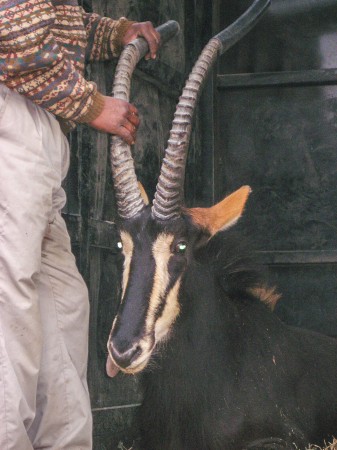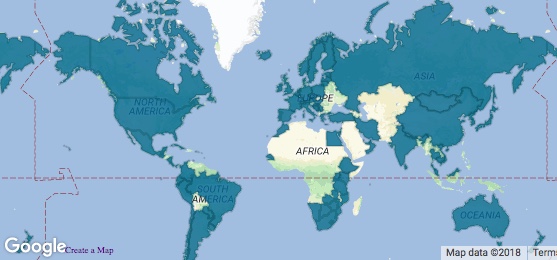It felt like we were flying a hundred miles an hour. That’s probably because the helicopter had no doors. And we were only about 50 feet above the ground. Below us, a 500 pound sable antelope was running as fast as it could. It thought it was running for its life, but really we were trying to help it. The antelope zig-zagged through the bush but couldn’t hide from us. Flying nearly directly overhead, Dr. Kriek stepped out of the cockpit, resting his left leg on the helicopter’s strut to steady the shot. And then boom! The colorful dart appeared like magic in the hindquarters of the sable.
I had joined Mattanu Private Game Reserve’s team of wildlife capture and immobilization specialists in their routine tasks of management and translocation. The mission today was to dart and collect three wild sable antelope from the reserve so that they could be moved across South Africa to another reserve that needed to increase its population of the animal. The translocation was being supervised by Mattanu’s resident wildlife veterinarian, Dr. JC Kriek.
I had met Dr. Kriek earlier that day and immediately wanted to nominate him for the South African version of The Most Interesting Man in the World. It was hard not to ask him if when he does drink beer, he prefers Dos Equis. Before we had climbed into the helicopter, Dr. Kriek spent some time preparing the tranquilizer darts and various other drugs that may be needed for our mission. I remember him warning me against touching the dart because if I accidentally pricked myself on it, the toxin would probably kill me. Noted.
Darting sable antelope is no easy task. As we lifted off to find our targets, a ground crew of three vehicles headed out to attempt to stay as close to us as possible. We would have to locate the correct sable and then dart them safely in a place accessible to the ground crew.
After Dr. Kriek hit our target antelope, we pursued the animal through the bush until the tranquilizer kicked in and it eventually sat down. The drug didn’t knock the animal out entirely. Instead, it was sedated but still able to move its head and things like that. Now the ground crew sprang into action. We radioed in the sable’s location and the convoy of vehicles approached. We touched down in the helicopter about 40 feet from the animal. Dr. Kriek and I jumped out of the helicopter and ran towards the scene with the helicopter’s rotors still roaring overhead.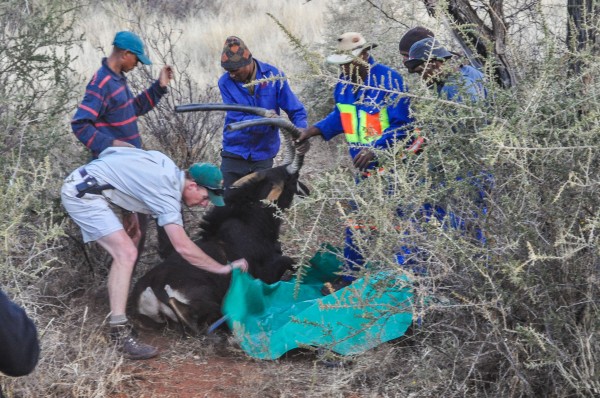
The crew approached the sable with extreme caution, unsure how much the tranquilizer had affected it. Once they felt the situation was under control, everyone had a job to do. Covers were placed over the antelope’s pointed horns to prevent any accidents. The animal was hydrated and positioned safely with someone assigned to hold its head in place. A special truck approached with a thick layer of foam on the flatbed to accommodate the animal. With the precision of a team of EMS workers moving a patient from the scene of a car accident, the men lifted the 500 pound antelope onto a special tarp, then hoisted the tarp into the back of the truck.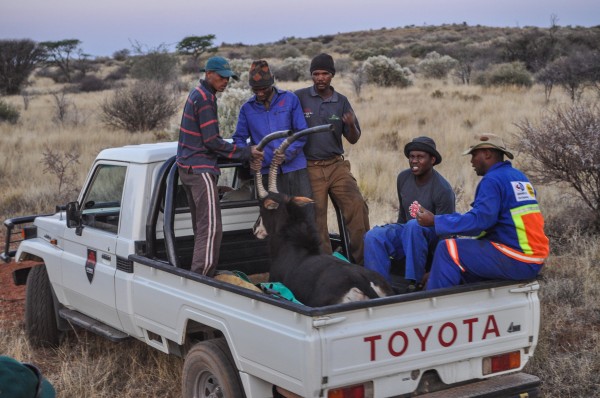
Over two days, I assisted Dr. Kriek and his team with darting and immobilizing several sable antelope for translocation elsewhere in South Africa. Once our mission was complete, the animals were loaded into a specially designed truck used for transporting wild animals and off they went to their new home in South Africa’s Limpopo province.
[youtube=http://youtu.be/CYrVffIXYVk]
Mattanu typically runs game capture safaris as part of veterinary student courses. During these courses, they look to mentor and transfer skills to up and coming wildlife veterinary enthusiasts. However, you don’t need to be an aspiring wildlife veterinarian to partake in this sort of experience. Contact Jacques Kriek at Mattanu about getting involved. If your trip to the reserve happens to line up with the needs of their animals, they would be happy to bring you along. I assure you it will be one of the most exciting things you’ve ever experienced.

